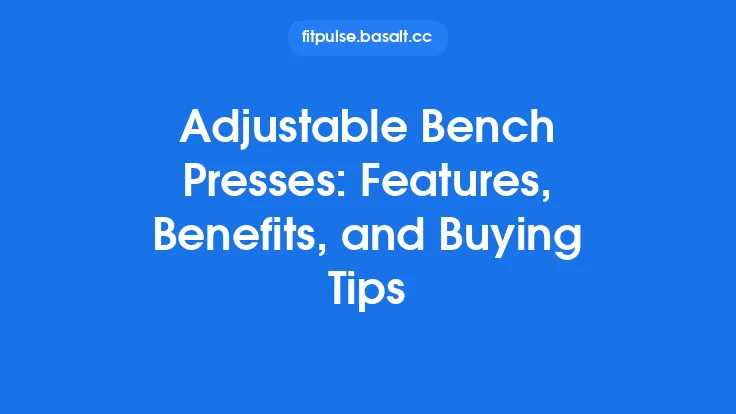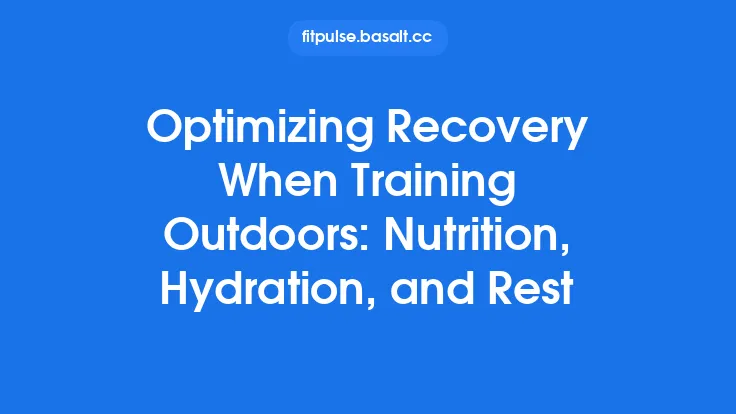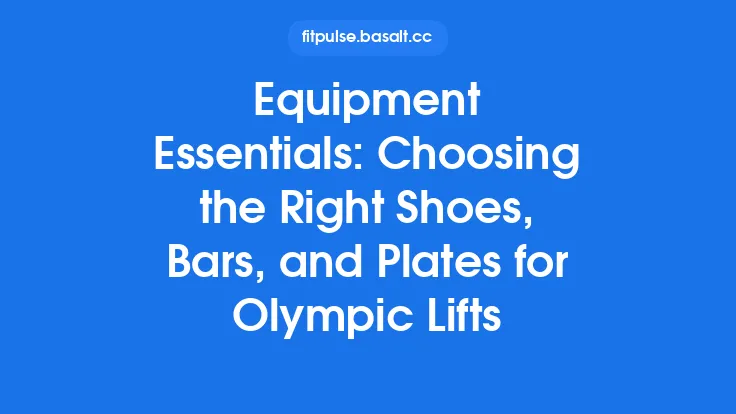When it comes to gaining precious seconds—or even minutes—on the road or the triathlon course, aerodynamics is the single most influential factor you can control. While power output and endurance are the foundation of any cycling performance, the way you slice through the air determines how efficiently that power translates into speed. This article breaks down the three pillars of aerodynamic optimization: body position, equipment choices, and clothing. By understanding the physics behind drag, applying proven positioning techniques, selecting the right gear, and dressing for minimal resistance, you can consistently shave off drag and ride faster without having to increase your wattage.
Understanding the Physics of Drag
Drag Force Equation
The aerodynamic drag force (F<sub>D</sub>) acting on a cyclist is described by the equation:
\[
FD = \frac{1}{2} \cdot \rho \cdot CDA \cdot v^2
\]
- ρ (rho) – Air density (kg·m⁻³). It varies with altitude, temperature, and humidity.
- C<sub>D</sub>A – The product of the drag coefficient (C<sub>D</sub>) and frontal area (A). This is the term you can directly influence through position, equipment, and clothing.
- v – Velocity relative to the air (m·s⁻¹). Drag increases with the square of speed, meaning a 10 % increase in speed results in roughly a 21 % increase in drag.
Because power required to overcome drag (P = F<sub>D</sub>·v) grows with the cube of speed, even modest reductions in C<sub>D</sub>A can produce disproportionately large gains in speed for the same power output.
Key Takeaway: Lowering C<sub>D</sub>A is the most effective way to become faster without pedaling harder.
1. Bike Position: The Core of Aerodynamic Efficiency
1.1. The Fundamentals of a Low-Drag Position
- Head‑Down Angle: The angle between your torso and the horizontal plane. A more horizontal torso reduces frontal area dramatically. Aim for a head‑down angle of 30–35° for most road cyclists; triathletes often target 35–40° due to the aero bars.
- Hip Angle: A tighter hip angle (≈70–80°) brings the pelvis forward, allowing the torso to stay low while maintaining a comfortable knee extension.
- Elbow Position: Elbows tucked close to the torso reduce the “wingspan” of the upper body. On aero bars, elbows should be positioned just inside the forearms, creating a narrow “tunnel” for airflow.
1.2. Measuring and Refining Your Position
| Method | Description | Pros | Cons |
|---|---|---|---|
| Video Analysis | Record a side view while riding on a flat road. Use software to measure angles. | Visual feedback, inexpensive. | Requires a good camera angle and post‑processing. |
| 3‑D Motion Capture | Specialized labs use markers and cameras to capture exact body geometry. | Highly accurate, can quantify C<sub>D</sub>A directly. | Expensive, not always accessible. |
| Fit‑Based Estimation | Use a professional bike fit to set baseline measurements (e.g., stack, reach, saddle setback). | Practical, integrates with comfort considerations. | May not capture subtle aerodynamic tweaks. |
Practical Tip: After establishing a baseline, make incremental changes (e.g., moving the saddle forward 5 mm, lowering the handlebar height by 2 cm) and test each change on a consistent course. Small adjustments compound; a 5 mm forward saddle shift can reduce C<sub>D</sub>A by ~0.001.
1.3. Balancing Aerodynamics with Power Output
A position that is ultra‑aero but compromises power production (e.g., excessive hip flexion limiting pedal stroke) can be counterproductive. The optimal position is the point where the reduction in C<sub>D</sub>A outweighs any loss in sustainable power. Use a power meter (or a reliable power estimate) to verify that your average wattage does not drop significantly after a positional change.
2. Equipment Choices that Cut Drag
2.1. Frame Geometry and Material
- Aero Frames: Shaped tubes (e.g., teardrop or truncated airfoil) reduce turbulence around the frame. Modern carbon aero frames can lower C<sub>D</sub>A by 0.005–0.010 compared with traditional round‑tube frames.
- Integrated Cockpit Systems: Combining the stem, handlebar, and brake levers into a single unit eliminates gaps where air can get trapped.
- Internal Cable Routing: Keeps cables hidden, smoothing airflow along the downtube and seat tube.
2.2. Wheels and Tires
| Wheel Type | Aerodynamic Impact | Weight Considerations | Best Use Cases |
|---|---|---|---|
| Deep‑section rims (≥50 mm) | Significant drag reduction at speeds >30 km/h. | Heavier, especially in crosswinds. | Flat, fast courses, time trials. |
| Tapered rim depth (30–40 mm) | Good compromise between aero and handling. | Moderate weight. | Varied terrain, windy conditions. |
| Bladed rims | Maximal aero benefit, but can be unstable in gusts. | Heavier, more expensive. | Controlled environments, indoor training. |
| Tubeless tires (23–25 mm) | Lower rolling resistance and smoother tire‑rim interface, reducing drag from tire deformation. | Slightly higher initial cost. | All road conditions. |
Tire Pressure: Maintaining optimal pressure (often 90–110 psi for 23 mm tires) reduces tire deformation, which in turn lowers aerodynamic drag caused by “squirm” at high speeds.
2.3. Aerobars and Extensions
- Tri‑Bars vs. Time‑Trial Bars: Tri‑bars provide a more upright position for the arms, while TT bars allow a deeper tuck. Choose based on race distance and comfort.
- Fore‑Arm Supports: Adding fore‑arm pads can improve comfort and allow a tighter elbow angle, further reducing frontal area.
- Adjustability: Fine‑tune the reach and drop of the aero bars to achieve the ideal elbow angle (≈90°) and forearm alignment.
2.4. Component Aerodynamics
- Integrated Seatpost: A seatpost that blends into the frame reduces turbulence at the rear triangle.
- Aero Seatpost (e.g., round‑to‑airfoil transition) can shave 0.001–0.002 off C<sub>D</sub>A.
- Hidden Brake Levers: Some aero frames incorporate brake levers into the cockpit, eliminating protruding levers.
- Saddle Design: Aero saddles with a narrower profile and reduced rearward drag can contribute marginal gains.
2.5. Accessories and Add‑Ons
- Helmet: The single most impactful piece of equipment for aero gains. Full‑coverage, teardrop‑shaped helmets reduce drag by up to 0.015 C<sub>D</sub>A compared with standard road helmets.
- Aero Bottle Cages: Low‑profile cages that sit flush with the frame minimize turbulence.
- Cable Housing: Use aero‑shaped housing (e.g., round‑to‑airfoil) for brake and shift cables.
3. Clothing: The Invisible Drag Reducer
3.1. Fabric Technology
- Tight‑Fit Materials: Compression fabrics eliminate loose fabric that flaps in the wind, reducing drag. Look for a blend of elastane (≥15 %) for stretch.
- Low‑Roughness Textiles: Smooth surfaces (e.g., Lycra, polyester blends) allow air to glide over the fabric with less friction.
- Seam Placement: Flat‑lock seams and minimal stitching reduce turbulence. Some high‑end kits use bonded seams.
3.2. Kit Design Elements
| Feature | Aerodynamic Benefit |
|---|---|
| Rear‑Panel Taper | Narrows the rear silhouette, decreasing wake size. |
| Front‑Panel Zippers | Allows a tighter fit around the chest and shoulders. |
| Integrated Bibs | Eliminates the need for a separate saddle cover, smoothing airflow over the rear. |
| Ventilation Slots | Strategically placed to balance cooling with drag; avoid large openings in high‑drag zones. |
3.3. Footwear and Pedal Systems
- Aero Shoes: Shoes with a streamlined toe box and minimal protruding laces reduce drag. Some models feature a “sleeve” that covers the shoe’s upper surface.
- Clipless Pedals: Modern road pedals have a low profile and smooth surfaces. Avoid bulky pedal cages or oversized cleats.
3.4. Gloves and Hand Position
- Aero Gloves: Short, low‑profile gloves reduce the surface area of the hands. For longer rides, consider a thin, breathable liner underneath for comfort.
- Hand Position: Keep fingers relaxed and close to the handlebar or aero bar extensions. Avoid “spreading” the hands, which increases frontal area.
3.5. Practical Dressing Tips
- Layer Wisely: In cooler conditions, use a thin, aero base layer under a full‑coverage jacket rather than a bulky insulated jacket.
- Avoid Loose Accessories: Loose socks, scarves, or loose‑fit jackets create flapping that dramatically increases drag.
- Test in Real Conditions: Wind tunnels are ideal, but a simple field test—riding the same stretch with and without a specific clothing item—can reveal noticeable speed differences.
4. Putting It All Together: A Systematic Approach to Aerodynamic Optimization
- Baseline Assessment
- Record a power‑controlled effort (e.g., 20 km at a steady wattage) on a flat, wind‑free road. Note average speed and perceived effort.
- Use a speed‑to‑power calculator to estimate your current C<sub>D</sub>A.
- Position Tweaks
- Adjust one variable at a time (e.g., lower handlebar height by 2 cm). Repeat the baseline effort and compare speeds.
- Continue until speed gains plateau or power output drops.
- Equipment Upgrades
- Prioritize high‑impact items first: aero helmet, deep‑section wheels, integrated cockpit.
- For each upgrade, repeat the baseline test to quantify the benefit.
- Clothing Evaluation
- Conduct short “swap” rides (5–10 km) with different kits while maintaining the same power output.
- Record speed differences; even a 0.5 km/h gain is meaningful over long distances.
- Fine‑Tuning and Maintenance
- Keep all components clean and free of debris; dirt on aero surfaces can increase drag.
- Periodically re‑measure C<sub>D</sub>A, especially after major equipment changes or after a significant change in body composition.
5. Common Misconceptions and Pitfalls
- “The lower, the better.” Going too low can compromise breathing, cause neck strain, and reduce power output. Find the sweet spot where drag reduction does not impair physiological performance.
- “All deep wheels are faster.” In windy conditions, deep rims can act like sails, increasing drag. Opt for a tapered depth or switch to shallower rims when gusts exceed 15 km/h.
- “Aero helmets are only for time trials.” Even on road rides, a well‑designed aero helmet can provide a noticeable speed boost, especially at speeds above 30 km/h.
- “Tight clothing is uncomfortable.” Modern compression fabrics are engineered for breathability and moisture management, allowing a snug fit without sacrificing comfort.
6. Future Trends in Cycling Aerodynamics
- Computational Fluid Dynamics (CFD) for Custom Kits: Riders can now upload body scans to generate personalized aero kits that match their exact shape, promising even lower C<sub>D</sub>A.
- Active Aerodynamics: Emerging concepts include adjustable wheel rims that change depth based on wind conditions, and smart helmets with airflow‑controlling vents.
- Integrated Power‑Aero Sensors: Devices that simultaneously measure power, speed, and wind conditions can provide real‑time feedback on aerodynamic efficiency, allowing riders to make on‑the‑fly adjustments.
7. Quick Reference Cheat Sheet
| Area | High‑Impact Action | Approximate C<sub>D</sub>A Reduction |
|---|---|---|
| Position | Lower handlebar height 2 cm | –0.003 to –0.005 |
| Helmet | Switch to full‑coverage aero helmet | –0.015 |
| Wheels | Install 50 mm deep carbon rims | –0.006 to –0.010 |
| Aero Bars | Add tri‑bars with fore‑arm supports | –0.004 |
| Clothing | Wear a tight‑fit, low‑roughness kit | –0.002 to –0.004 |
| Bike Frame | Use an integrated aero frame | –0.005 |
| Tires | Go tubeless, maintain optimal pressure | –0.001 to –0.002 |
Combined, these changes can lower your overall C<sub>D</sub>A by 0.030–0.045, translating to a 5–10 % speed increase at the same power output.
Final Thoughts
Aerodynamic optimization is a blend of science, engineering, and personal comfort. By systematically addressing body position, selecting equipment that complements that position, and dressing in purpose‑built clothing, you can achieve lasting performance gains that endure across seasons and race distances. Remember that the most effective aero setup is one that you can sustain comfortably for the duration of your ride—speed is only valuable when it can be maintained. Keep testing, stay attentive to how each change feels, and let the physics guide you toward a faster, more efficient ride.





